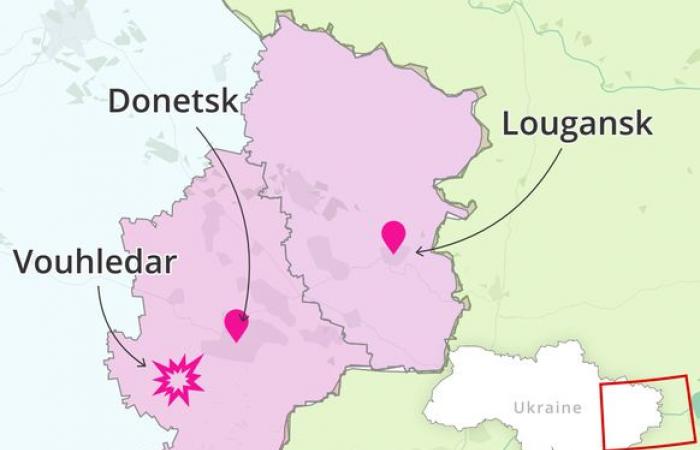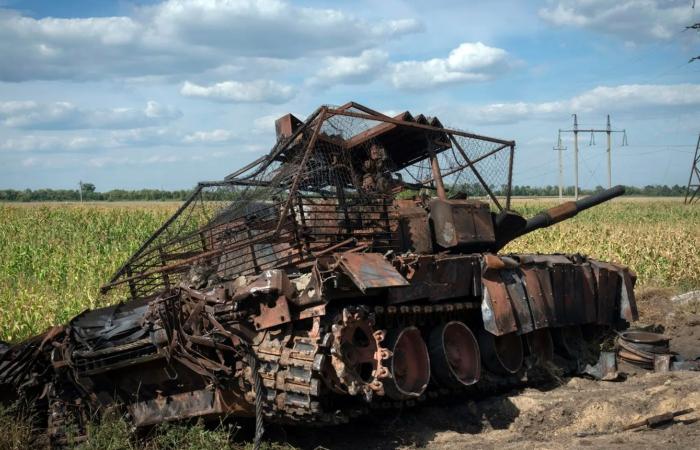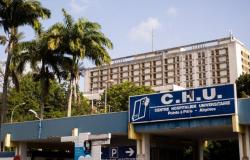Despite significant territorial losses, Ukraine seems to be pursuing a clear strategy in Donbass, but it has its limits. It is precisely the Kursk offensive that could cause his plan to fail.
Simon Cleven / t-online
More from “International”
An article from
The Ukrainian president’s morale seems good. “This is a very important phase of the war, a phase which has helped our country a lot and which will continue to help it,” said Volodymyr Zelensky in his video address on Sunday evening, referring to the Ukrainian offensive in the Kursk region of Russia. With the help of “sufficient support from our partners,” the pressure on Kursk should be maintained and even increased:
“For only through force can we come closer to peace”
Volodymyr Zelensky
Indeed, at the start of his offensive at Kursk About two months ago, Ukraine had the advantage of surprise. Since then, kyiv’s troops have controlled between 1,000 and 1,300 square kilometers of land. Russian counter-offensives have so far largely failed. However, Ukraine missed an important objective: contrary to what its military command hoped, Moscow redeployed very few troops from Donbass to Kursk.
Ukrainian soldiers along the front therefore face great problems, particularly visible in Donbass. Russia has considerable advantages there, both in personnel and material. Faced with this, kyiv’s troops have had to withdraw several times from strategic locations in recent weeks, notably at the beginning of October from Vouhledar, in the Donetsk region. What may initially seem like a serious setback for kyiv could, however, be part of a larger plan, the outcome of which, however, remains uncertain.
Image: watson/datawrapper
“This war will not be won by controlling a city”
The idea seems simple: Ukraine seeks to take advantage of the logic of war of attrition, which is raging especially in the east of the country, as much as possible. Austrian military analyst Franz-Stefan Gady explained this strategy in an interview with the New York Times saying:
“This war will not be decided by whoever controls Vouhledar or other frontline tactical cities”
What really matters is “how many troops the Russians deployed to take Vouhledar and how many losses the Ukrainians suffered defending it.”
It is difficult to quantify the total number of Russian soldiers killed during the attacks on the city. A report from the British channel BBC, however, provides an indication. From the fall of 2022 and the winter of 2023, violent fighting raged around Vouhledar. Russia then sent the special units of the 155e and the 40e marine brigade to conquer the city.
According to the report, more than 5,000 soldiers in total are believed to have served in the two brigades before the war. Based on public data, the BBC estimates that both units lost more than 2,100 men in the Battle of Vouhledaror a little more than 40% of the original workforce. The public media counts among the victims both the dead, the injured and the missing. Added to this are the unquantified losses of other units deployed around the city.
Russia lost around 1,200 men per day in August
It is currently unknown how many soldiers were killed, injured or missing on the Ukrainian side during the Battle of Vouhledar. However, in times of war, losses on the attackers’ side are generally much higher than those of the defenders, which can retreat behind fortified positions. In the particular case of Vouhledar, the town’s elevated position also favored the defenders.
According to Western data, Russia’s total losses are still significantly higher. In August alone, Moscow’s troops lost an average of nearly 1,200 men per day, according to statements by British military advisor Nicholas Aucott.
The considerable personnel losses of Russian troops during the offensive in Donbass also appear to extend to military equipment. In the Donetsk region, Russia has been carrying out highly intense offensives towards the towns of Pokrovsk, Kramatorsk and Sloviansk for about a year, however, advancing very slowly. The town of Marïnka was taken in January, followed a month later by Avdiivka, and now Vouhledar. On Tuesday, the Ukrainian military also said that Russian troops had entered the town of Toretsk.
30,000 Ukrainians fight in Kursk
According to user of the offensive in the Pokrovsk region. These include battle tanks and armored vehicles. According to the American think tank Institute for the Study of War (ISW), this is the equipment of “at least five divisions” of the Russian army.
“Naalsio” uses publicly available images to determine losses. The number of unrecorded cases is therefore probably even higher; far from all the destruction is recorded in photos or videos.

A destroyed Russian tank lies on the side of a road in the Kursk regionImage: dr
But despite heavy Russian losses, Ukraine’s strategy of attrition has its own pitfalls. Even before the offensive on Russian soil, the war front already stretched over more than 1,200 kilometers. The Ukrainian advance at Kursk further lengthened it, highlighting the personnel and material shortages of kyiv’s forces. In Kursk alone, around 30,000 Ukrainian soldiers would be engaged, troops which are lacking to defend positions in Donbass.
According to a report from Washington Postthis was felt on Russian territorial gains. According to Finnish military analyst Pasi Paroinen, Russia was able to conquer around 820 square kilometers across all of Ukraine in August and September, including around 700 square kilometers in the Donetsk region alone. The same period corresponds to the Ukrainian offensive at Kursk.
Russia adapts its approach
What further complicates the situation for the Ukrainians is that the Russian army also learns from its mistakes. Until a few months ago, the Russian so-called “meat grinder” tactic consisted of sending wave after wave of soldiers into Ukrainian positions, which resulted in heavy losses. However, according to a report from Washington PostRussia is now adapting to this situation.
So Russian commanders are now sending smaller units, protected by squadrons of drones and artillery fire. These combat groups are more difficult for Ukrainians to detect and fight. Additionally, it appears that Russia has improved communication between its units and coordination of their attacks.
Finally, Russia continues to recruit large numbers of “fresh” soldiers to compensate for battlefield losses. The Russian war economy also still provides sufficient material to the front. Western military analysts, however, estimate that this situation can only be maintained until 2026, when Russia could also experience serious material supply problems.
In the meantime, a record ????
“This is the strategic question”
Hope, according to US military expert Rob Lee, comes from the new mobilization launched in May, which could improve the troop situation in the medium term, Lee told the Washington Post. Moreover, the kyiv military command may have other surprises in store on the battlefield.
But ultimately, Lee also refers to the logic of the war of attrition: in the end, he who can most easily bear his losses wins. “At what point does this become untenable or does it lead to political problems for one of the camps?” explains the expert in the Washington Post to illustrate the fundamental problem for both Russia and Ukraine. “I think that’s the strategic question.”
All the hot news on Ukraine…
Show all articles
Translated and adapted by Noëline Flippe








